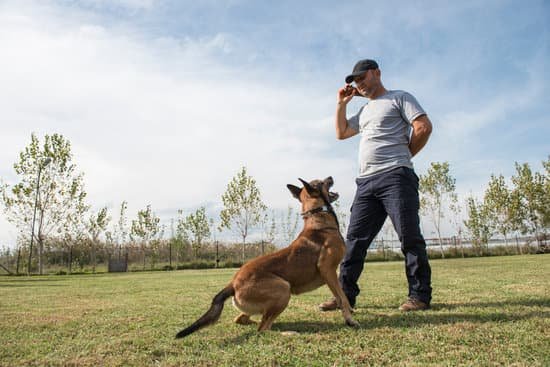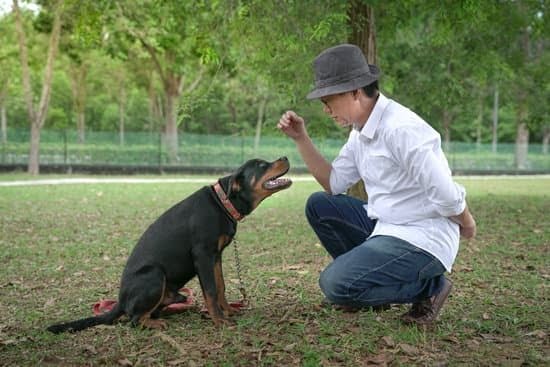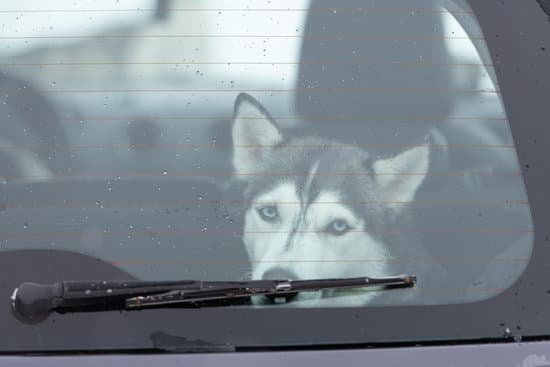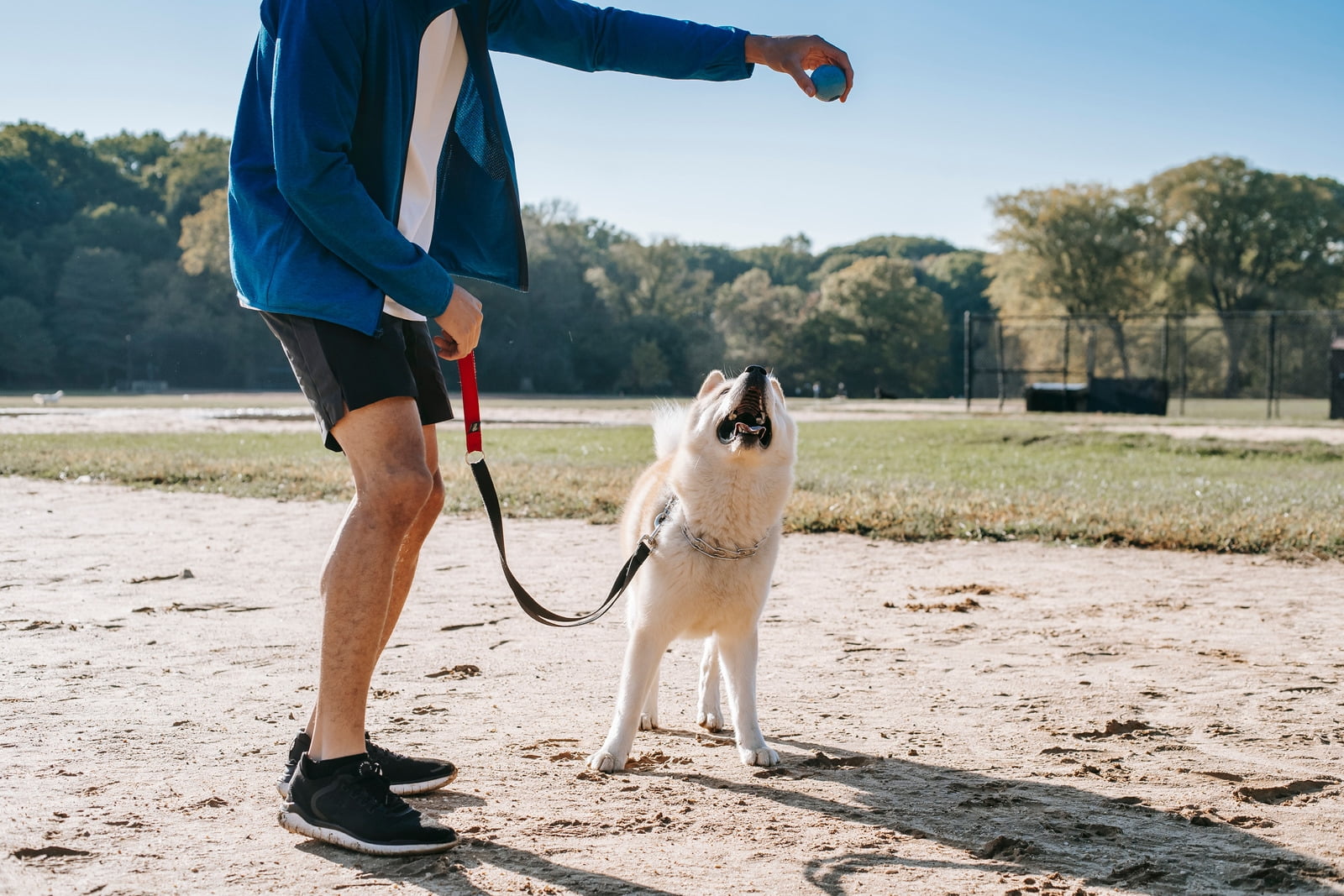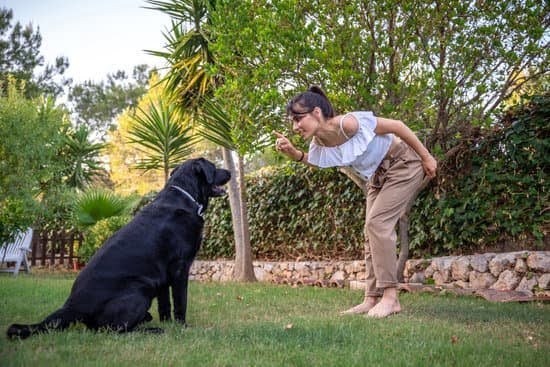When can you potty train a dog? Potty training a dog is an essential part of being a responsible pet owner.
It not only helps to maintain a clean and odor-free home but also ensures that your furry friend understands appropriate bathroom behaviors.
In this article, we will explore the various aspects of potty training for dogs, including understanding the importance of potty training, signs that indicate your dog is ready to be potty trained, choosing the right method for potty training your dog, setting a potty training schedule, dealing with accidents, tips for successful training, celebrating success, and common mistakes to avoid.
Potty training a dog requires time, patience, and consistency. Just like teaching a child how to use the toilet, it’s important to understand what goes into successfully potty training a dog. By following the right steps and avoiding common mistakes, you can ensure that your canine companion learns good bathroom habits.
In this article, we will delve into the fundamentals of potty training for dogs and provide you with valuable insights on how to navigate this important aspect of pet ownership. Whether you are considering getting a new puppy or need to retrain an older dog, understanding the process and having the right information at your disposal is key to successful potty training.
Understanding the Importance of Potty Training for Dogs
Potty training is an essential aspect of raising a well-behaved and disciplined dog. It not only helps in maintaining a clean and hygienic living environment but also establishes a routine for your furry friend. By understanding the importance of potty training for dogs, you can effectively teach them where and when it is appropriate to relieve themselves.
There are several key reasons why potty training is crucial for dogs:
- Hygiene: Proper potty training ensures that your home remains clean and free from any mess or odor caused by accidents.
- Health: Regularly eliminating waste in the appropriate area reduces the risk of bacteria and parasites that can affect your dog’s health.
- Behavior: Potty training helps in shaping good habits and discipline in your dog, leading to better obedience and a harmonious relationship with their owners.
In addition to these reasons, potty training also promotes a sense of responsibility for pet owners, as they learn to understand their dog’s needs and behaviors. It is an essential part of bonding with your pet and ensuring their well-being. By recognizing the significance of potty training, dog owners can approach this task with patience, consistency, and understanding to achieve successful results.
Signs That Indicate Your Dog Is Ready to Be Potty Trained
Physical Signs
Before you begin potty training your dog, it’s important to look for physical signs that indicate they are ready. These include being able to hold their bladder for longer periods of time, showing signs of discomfort when they need to go, and having fewer accidents in the house. If your dog is starting to exhibit these physical signs, it may be a good time to start the potty training process.
Behavioral Signs
In addition to physical signs, there are also behavioral clues that can indicate your dog is ready to be potty trained. These include sniffing around for a spot to go, circling or squatting as if they’re about to do their business, and showing understanding of basic commands like “sit” and “stay.” If you notice these behavioral signs in your dog, it’s a good indicator that they are ready to start the potty training process.
Age and Developmental Stage
While age isn’t the only factor in determining if your dog is ready to be potty trained, it can still be a helpful guideline. Most experts agree that puppies are generally ready to start potty training when they are around 12 weeks old.
However, each dog is different, and some may show readiness earlier or later than others. It’s important to consider your dog’s individual developmental stage and readiness when deciding if it’s time to start potty training.
Choosing the Right Method for Potty Training Your Dog
When it comes to potty training your dog, choosing the right method is crucial for success. There are various approaches you can take, and it’s essential to consider your dog’s breed, age, and temperament when deciding which method will work best. Here are some popular methods for potty training your dog:
- Crate Training: This method involves confining your dog in a crate when you’re unable to supervise them. Dogs have a natural instinct to keep their den clean, so they are less likely to eliminate in the crate. Make sure the crate isn’t too large, as dogs are less likely to soil their sleeping area.
- Paper Training: This method involves using newspapers or training pads in a designated area of your home for your dog to eliminate on. Gradually move the papers closer to the door that leads outside, eventually leading your dog to do their business outside.
- Bell Training: This method involves teaching your dog to ring a bell when they need to go outside. Hang a bell by the door at nose level for your dog and ring it every time you take them out. Your dog will learn to associate ringing the bell with going outside.
It’s important to remember that consistency is key regardless of which method you choose. Always use positive reinforcement and never punish your dog for accidents. Each dog is different, so be patient and willing to adjust your approach as needed until you find what works best for your furry friend.
These methods can be effective tools for potty training your dog, but it’s essential to be patient and consistent as you work through the process. Keep in mind that all dogs are individuals, so what works for one may not work for another. By understanding your dog’s needs and being flexible in your approach, you’ll be well on your way to successfully potty training your canine companion.
Setting a Potty Training Schedule for Your Dog
Potty training your dog requires consistency and routine, and setting a schedule is crucial in achieving success. A regular schedule helps your dog understand when it’s time to go outside to do their business, making the training process more effective.
When creating a potty training schedule for your dog, consider their age, breed, size, and feeding times. Puppies typically need to go outside more frequently than adult dogs, and smaller breeds have smaller bladders that require more frequent trips outside.
It’s important to take your dog outside first thing in the morning, after meals, before bedtime, and every few hours in between. Monitor your dog’s behavior and look for signs that they need to eliminate such as sniffing around or circling. By taking them outside at consistent times and paying attention to their cues, you can help them develop good potty habits.
| Time | Activity |
|---|---|
| 7:00 AM | Take the dog outside for the first bathroom break of the day |
| 8:00 AM | Feed the dog breakfast |
| 8:30 AM | Take the dog outside again after eating |
| (and so on ) | (continue with regular intervals throughout the day) |
Remember that every dog is unique, so be observant of their behavior and adjust the schedule as needed based on their signals and responses during potty training.
Dealing With Accidents During the Potty Training Process
Potty training a dog can be a challenging process, and accidents are a common occurrence during this time. It’s important for dog owners to understand that accidents are normal and part of the learning curve for their pets.
Accidents can happen due to various reasons such as the dog not yet fully understanding where they should go, not being let outside in time, or even due to medical issues. Understanding how to properly deal with accidents is crucial in ensuring that your dog successfully learns good potty habits.
When accidents happen, it’s important to remain calm and avoid punishment. Instead, focus on cleaning up the accident promptly with an enzymatic cleaner specifically designed for pet messes. This type of cleaner effectively breaks down the odor-causing elements within the accident area and helps prevent your dog from repeatedly soiling the same spot. Additionally, it’s crucial to continue providing positive reinforcement when your dog goes potty in the appropriate place, helping them associate good behavior with praise.
Furthermore, keeping a close eye on your dog and learning to recognize their signals can be key in preventing accidents before they happen. Signs such as sniffing around, circling, or suddenly disappearing from sight can indicate that they need to go outside. By proactively addressing these signs and taking your dog out at regular intervals, you can help minimize the occurrence of accidents during the potty training process.
| Dealing With Accidents | Potty Training Tips |
|---|---|
| Remain calm and avoid punishment | Provide positive reinforcement for good behavior |
| Clean up accidents promptly with enzymatic cleaner | Recognize your dog’s potty signals |
Tips for Successfully Potty Training Your Dog
Be Patient and Consistent
Potty training a dog takes time and consistency. It is important to be patient with your furry friend as they learn the ropes of where to do their business. Set aside dedicated time each day for potty training and stick to a routine. This will help your dog understand what is expected of them and make the process smoother for both of you.
Use Positive Reinforcement
When your dog successfully goes potty in the designated area, be sure to praise them and give them a small treat as a reward. Positive reinforcement will help reinforce good behavior and encourage your dog to continue using the designated spot for potty breaks.
Supervise Your Dog
During the potty training process, it is important to keep a close eye on your dog, especially when they are indoors. By supervising them, you can quickly guide them to the designated potty area if needed, and prevent accidents from happening. Additionally, supervision allows you to learn your dog’s body language and cues when they need to go, enabling you to react proactively.
Celebrating Success
Once your dog has successfully completed potty training, it’s time to celebrate their success and transition into maintaining good potty habits. Celebrating this milestone is an important part of the process as it reinforces positive behavior and encourages your dog to continue with their good potty habits. This section will provide tips on how you can celebrate your dog’s success and reinforce their newly formed habits.
One way to celebrate your dog’s successful potty training is by offering them rewards for good behavior. Positive reinforcement, such as treats, praise, or playtime, can be used to show your dog that using the designated potty area is the right thing to do. This positive association will motivate them to continue with their good potty habits.
Another way to celebrate success is by gradually increasing the freedom and access that your dog has within the house. As your dog demonstrates consistent good potty behavior, you can slowly allow them more freedom indoors. This gradual increase in freedom will reinforce their good habits and build their confidence in their ability to hold themselves until they can go outside.
Lastly, it’s important to continue with a regular schedule for potty breaks even after your dog has been successfully potty trained. Consistency is key in maintaining good potty habits, so continue to take your dog outside at regular intervals throughout the day. By doing so, you will help solidify their new habits and prevent any regression in their behavior.
Common Mistakes to Avoid When Potty Training Your Dog
In conclusion, potty training a dog is an important and necessary process for both the pet and the owner. Understanding the signs that indicate your dog is ready to be potty trained, choosing the right method, and setting a consistent schedule are all crucial steps in this process. However, it’s also important to be aware of common mistakes that can hinder the potty training progress.
One common mistake to avoid is punishing your dog for accidents. Negative reinforcement can create fear and anxiety in your pet, making it more difficult for them to learn where they should be going potty. Instead, focus on positive reinforcement and rewards when they go in the designated area.
Another mistake is not being consistent with the potty training schedule. Dogs thrive on routine and need to know when they should be going outside or using their designated indoor spot. Inconsistency can lead to confusion for your pet, making it harder for them to understand where they should go potty.
Lastly, avoid giving up too soon. Potty training takes time and patience, so it’s important to stay committed to the process even if there are setbacks or accidents along the way.
With consistency, positive reinforcement, and patience, you can successfully potty train your dog and set them up for good potty habits in the future. Remember, every dog is different so what works for one may not work for another – don’t be afraid to try different methods until you find what works best for your furry friend.
Frequently Asked Questions
Can an 8 Week Old Puppy Be Potty Trained?
Yes, an 8-week-old puppy can be potty trained, but it will require patience and consistency. At this young age, puppies are still developing their bladder control, so frequent trips outside and crate training can help with the potty training process.
At What Age Are Dogs Easiest to Potty Train?
The easiest age to potty train a dog is generally between 12 and 16 weeks old. At this age, most puppies have developed enough bladder control to start understanding the concept of holding it and going outside to eliminate.
What Is the Best Age to Potty Train a Puppy?
The best age to potty train a puppy is around 12-16 weeks old. This is the age when most puppies can start to grasp the concept of potty training and can learn to hold their bladders for longer periods. Consistent positive reinforcement, regular bathroom breaks, and crate training can all contribute to successful potty training at this age.

Welcome to the blog! I am a professional dog trainer and have been working with dogs for many years. In this blog, I will be discussing various topics related to dog training, including tips, tricks, and advice. I hope you find this information helpful and informative. Thanks for reading!

